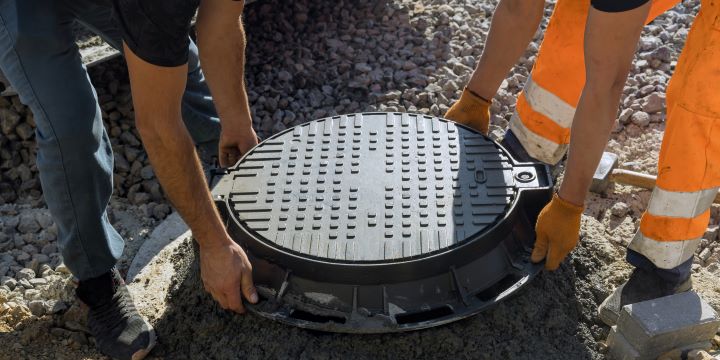Introduction
As the colder months approach, homeowners seek efficient ways to keep their homes warm and comfortable without significantly increasing their heating bills. One often overlooked aspect of home heating efficiency is the direction in which ceiling fans turn. While ceiling fans are commonly associated with cooling, they also play a crucial role in heating your home during the winter. This article delves into the importance of ceiling fan direction in winter and provides guidance on how to optimize your fan’s settings for maximum comfort and energy efficiency.
The Science Behind Ceiling Fan Direction
Ceiling fans contribute to home comfort by improving air circulation. The direction your ceiling fan spins can either create a cooling effect or help distribute warm air more evenly throughout your living spaces. In winter, the correct ceiling fan setting can recirculate warm air that naturally rises to the ceiling, pushing it back down into the room to enhance warmth and comfort.
Winter Setting: Clockwise Rotation
During winter, your ceiling fan should rotate in a clockwise direction when viewed from below. This setting, often referred to as the “reverse” setting, allows the fan to pull cool air up towards the ceiling, which then displaces the warm air pooled near the ceiling, pushing it down along the walls and back into the living space. This gentle updraft helps to maintain a consistent temperature throughout the room, reducing the need for excessive heating and, consequently, helping to lower energy costs.
How to Adjust Your Ceiling Fan for Winter
Adjusting your ceiling fan for winter use is typically straightforward. Most modern ceiling fans come equipped with a switch that reverses the blade direction. This switch is usually located on the fan’s body, above the blades. Here are simple steps to ensure your fan is winter-ready:
- Ensure Safety: Turn off the fan and ensure it has completely stopped moving.
- Locate the Direction Switch: Find the small switch on the fan’s body and flip it to the opposite position.
- Test the Fan: Turn the fan on a low setting to verify it is rotating clockwise.
- Adjust as Needed: If your fan has multiple speeds, experiment to find the most effective setting for circulating warm air without creating a draft.
The Benefits of Correct Ceiling Fan Usage in Winter
Utilizing your ceiling fan during the winter has several benefits, including:
- Energy Savings: By improving the distribution of warm air, you can potentially lower your thermostat setting, leading to significant savings on heating costs.
- Enhanced Comfort: Eliminating cold spots and improving overall room temperature consistency contributes to a more comfortable living environment.
- Environmental Impact: Reducing the need for heating contributes to lower energy consumption, which is beneficial for the environment.
Expert Tips for Maximizing Efficiency
To further optimize your ceiling fan’s performance in winter, consider these expert tips:
- Combine with Other Heating Sources: Use your ceiling fan in conjunction with other heating methods to enhance overall efficiency.
- Regular Maintenance: Keep your ceiling fan clean and well-maintained to ensure optimal performance.
- Consider Upgrades: If your ceiling fan is outdated, consider upgrading to a more energy-efficient model designed with better winter functionality.
Conclusion
Understanding the importance of ceiling fan direction in winter can significantly enhance your home’s comfort and energy efficiency. By ensuring your ceiling fan is set to rotate clockwise, you can redistribute warm air throughout your living spaces, creating a more comfortable environment and potentially reducing your heating bills. As we embrace the cooler months, take a moment to adjust your ceiling fan settings and enjoy the cozy warmth and savings it brings to your home.
FAQ Section
Q: Can all ceiling fans be adjusted for winter use?
A: The majority of modern ceiling fans are designed with a reversible motor, enabling them to rotate in both clockwise and counterclockwise directions. This feature is crucial for adjusting your fan for seasonal use—counterclockwise for cooling in the summer and clockwise for warming in the winter. However, not all ceiling fans have this capability, particularly older or more basic models. To determine if your fan is suitable for winter use, you should first consult the user manual or manufacturer’s website. If information isn’t readily available, look for a small switch on the fan’s body, typically located on the side of the motor housing. This switch controls the blade direction. If your fan lacks this switch, it may not be designed to reverse direction for winter use. In such cases, considering an upgrade to a model with a reversible motor could enhance your home’s energy efficiency and comfort during colder months.
Q: How fast should the fan spin in winter?
A: The optimal speed for a ceiling fan during winter is generally a low to medium setting. This speed range is effective for gently circulating warm air that has risen to the ceiling without generating a noticeable breeze that could cause a chill. The goal is to redistribute heat evenly throughout the room, rather than to cool it, which is why a gentler speed is preferred. Experimenting with your fan’s settings can help you find the perfect balance that circulates warm air efficiently without disrupting the cozy, still air you desire during colder weather. Remember, the right setting can vary based on the room’s size, ceiling height, and overall layout, so some trial and adjustment may be necessary to achieve the best results.
Q: Can ceiling fans really make a difference in heating efficiency?
A: Absolutely. Ceiling fans play a significant role in enhancing the efficiency of your home’s heating system. By ensuring your ceiling fan is set to rotate clockwise at a low speed during the winter, you facilitate the movement of warm air that has risen to the ceiling back down into the living space. This redistribution helps to maintain a more consistent temperature throughout the room, eliminating cold spots and reducing the need for your heating system to work overtime. As a result, you may find that you can comfortably lower your thermostat setting by a few degrees, leading to noticeable savings on your heating bills. The key to maximizing these benefits lies in proper fan use and regular maintenance, ensuring your fan operates efficiently and contributes positively to your home’s overall warmth and energy consumption. Integrating ceiling fans into your home heating strategy is a smart, cost-effective approach to staying comfortable while keeping energy costs in check during the winter months.
Incorporating these expanded answers into your article will provide readers with a deeper understanding of how to optimize their ceiling fan use during the winter, enhancing both comfort and energy efficiency in their homes.




